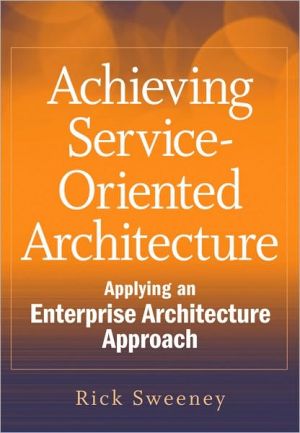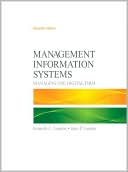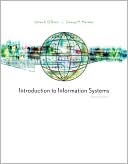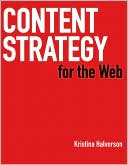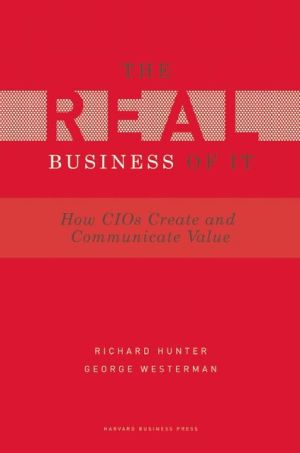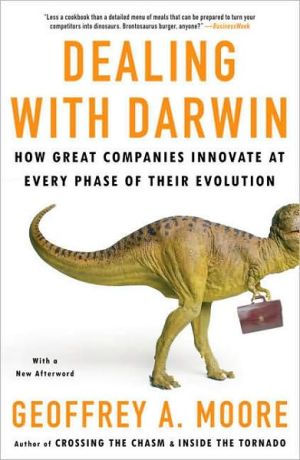Achieving Service-Oriented Architecture: Applying an Enterprise Architecture Approach
Praise for Achieving Service-Oriented Architecture\ "If you are considering moving to SOA or wondering whether SOA is the right direction for your company, then this book is for you. Unlike other SOA books that dive into the technical aspects of SOA, Rick takes an architectural and business approach to SOA. He describes why architecture is so important to a business and how SOA can transform your business to help reduce cost, increase efficiency, and become more profitable. In addition to...
Search in google:
Achieving Service-Oriented ArchitectureApplying an Enterprise Architecture Approach Presenting an architectural approach to the cultural, organizational, and operational changes that must be made across the corporate landscape to successfully achieve service-oriented architecture (SOA), Achieving Service-Oriented Architecture: Applying an Enterprise Architecture Approach strategically combines the perspectives of enterprise architecture (EA) business organization with management practice, both critical to realizing SOA's full value. This book reveals how you can set up your IT business organizations and practices to successfully implement and run your application development life cycle under an architecturally driven SOA paradigm. Author and SOA expert Rick Sweeney shows how you can transform your EA practice so that SOA is the predominant strategic approach for applications utilized in the company. Spelling out all the definitions and documentation needed to implement the approach, this how-to manual lets you see the entire architectural approach to SOA and what makes all the pieces of the approach fit and complement each other, explaining: Why a new architectural approach is required to achieve all the value SOA has to offer How to set up and run your SOA enterprise architecture practice Which human resources you need to implement the processes, defined in terms of the roles, responsibilities, and capabilities of those resources The various business and IT organization models and how to deal with them The roles and responsibilities of the business participants in the SOA application development process How to leverage your firm's existing architecture into this new framework SOA has changed the entire landscape for planning, designing, implementing, and supporting business applications. While Achieving Service-Oriented Architecture is not an introduction to EA or SOA nor the technical capabilities needed to build an SOA application, this book will prepare you to challenge every aspect of your corporate culture toward an IT transformation that impacts every aspect of your company.
AcknowledgmentsIntroductionAbout the Web SitePart I Value Of Enterprise Architecture And SOAChapter 1 What Is an Architecture Practice, and Why Do You Need One? 3Business Organizations and Departments Do Not Operate as Isolated Islands 3Looking at the Past to Understand the Future 5Summary 7Chapter 2 Why Is a Service-Oriented Architecture So Valuable? 9Where Does SOA Fit In? 10How Has Technology Been Evolving and Advancing to Solve These Problems? 11Where Do We Need to Focus Today? 14How Do We Express the SOA Value from a Business Perspective? 14Value of SOA from a Financial Perspective 20Summary 22Chapter 3 A New Architecture for a New World 23This Is Not Your Grandfather's World 23What Are Business Applications, and What Is Wrong with Them? 24Summary 32Chapter 4 SOA and Channels 33Value of Channels 34Traditional (Non-SOA) Approach to Channels 35Intermediary Channels 41SOA Security Framework for Channels 43Architecture for SOA Channels and Their Security Frameworks 45Value-Added Extensions to an Enterprise Security Framework 45Channel Governance 46Summary 47Part II Architecture Framework and MethodologyChapter 5 Service-Oriented Architecture Enterprise Architecture Framework and Methodology 51SOA Enterprise Architecture Framework 51Overview of the SOA-EAF Methodology 84Summary 87Chapter 6 Incorporating Existing Enterprise Architecture Documents and Artifacts into the SOA-EAF 89Relationship of the SOA Enterprise Architecture Framework to Other EA Frameworks 89Value of Mapped EA Artifacts 91Incorporating Zachman Framework Artifacts into the SOA-EAF 92General Approach for Integrating and Leveraging EA Artifacts into the SOA-EAF 99Summary 100Part III The SOA-EAF Methodology Processes And ConsiderationsChapter 7 Dealing with Purchased or Leased Business Applications 103A Future Vision of Vendor Participation in SOA 104Adopting SOA Partnerships with Vendors Supplying Leased or Purchased Business Applications 108Special Considerations when Business Applications Are Hosted or Located in Multiple Data Centers 113Performance Techniques for SOA 115Summary 118Chapter 8 Transforming Governance to Support SOA 119Enterprise SOA Portfolio Plan and the Release Approach to Application Delivery 119Managing the Impact on Architecture Resources 128Five Levels of SOA Governance 129Summary 173Chapter 9 SOA System Development Life Cycle 175Paradigm Shift of It Development Resources, Processes, and Practices to Support SOA 176Phases of the SOA System Development Life Cycle 179Summary 211Chapter 10 Capacity Planning under SOA 213Layered Approach to Monitoring and Managing a Distributed SOA Architecture 213SOA Initiative Capacity and Performance Assessment Process 215Proactive Planning for SOA 216Capacity and Performance Planning for Releases 223Application-Level Monitoring in Production 225Summary 226Chapter 11 People Involved in the SOA Process 227Architecture Resource Requirements for SOA 227Development Resources 241Test and Quality Assurance Resources 244Project Management Resources 246Initiative Business Resources 247Release Management Resources 249Production Readiness Resources 249Production Support Resources 250Governance Business Resources 251Summary 253Chapter 12 Leveraging SOA to Decommission, Replace, or Modernize Legacy Business Applications 255SOA Architectural Approach to Legacy Applications 256Making Legacy Application Recommendations Based on the Business and Technical Assessments 266Legacy Application SOA Modernization and Replacement Solution Example 267Summary 272Part IV Developing Your Plan For Achieving Service-Oriented ArchitectureChapter 13 Implementing an Effective SOA Strategy under a Decentralized Business or IT Model 275Business and IT Organization Variations 275Summary of the Four Variation Quadrants of the Business and IT Models 280Summary 282Chapter 14 Assessing the Organization's SOA Maturity and Developing Your Company's SOA Business Strategy and Roadmap 283What Is the SOA Business Strategy and Roadmap? 284Framework for Assessing Maturity 285Piloting an SOA Initiative to Shake Out and Evaluate the Model 296Structure of the SOA Business Strategy and Roadmap 299Summary 301Appendix A SOA-EAF Documentation Templates 303Appendix B Service Categories and Types 311Appendix C SOA Security Development Framework 331Glossary 343About the Author 349Index 351
